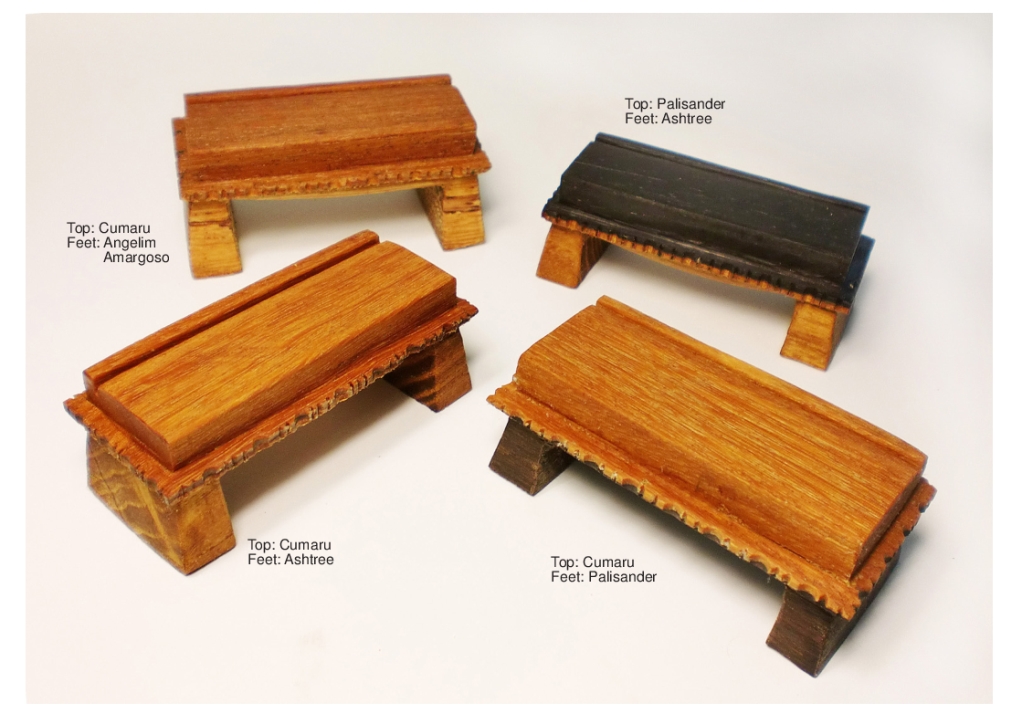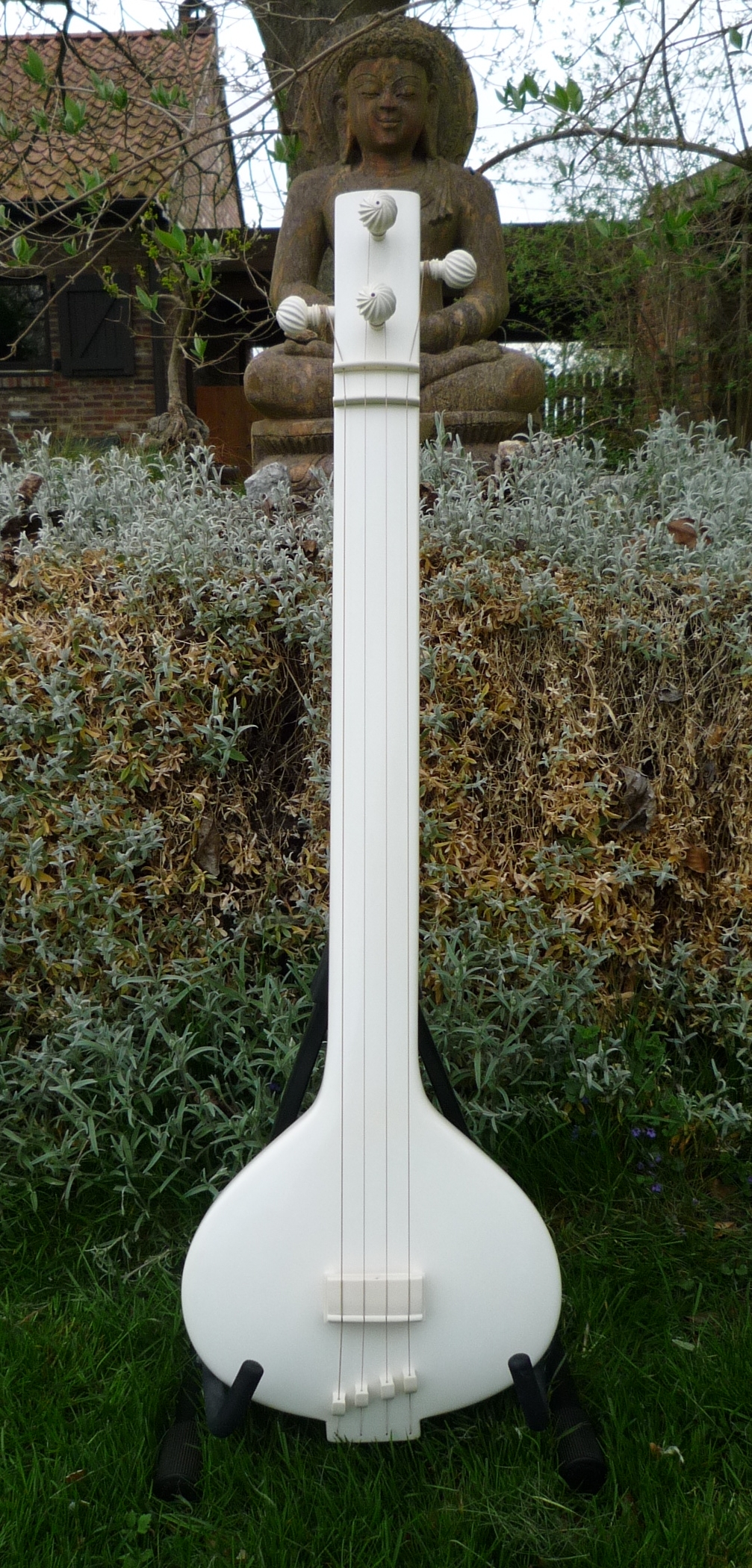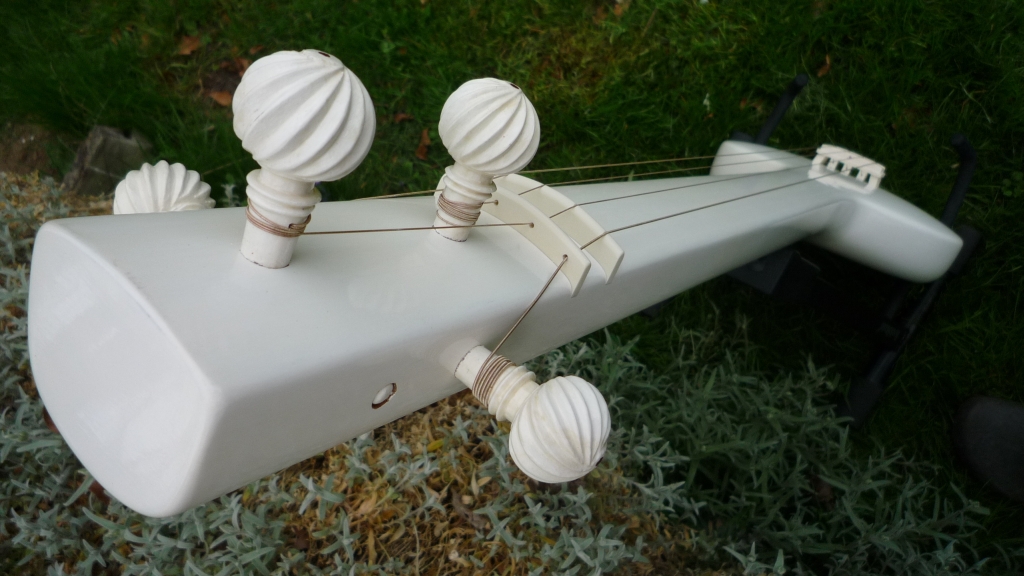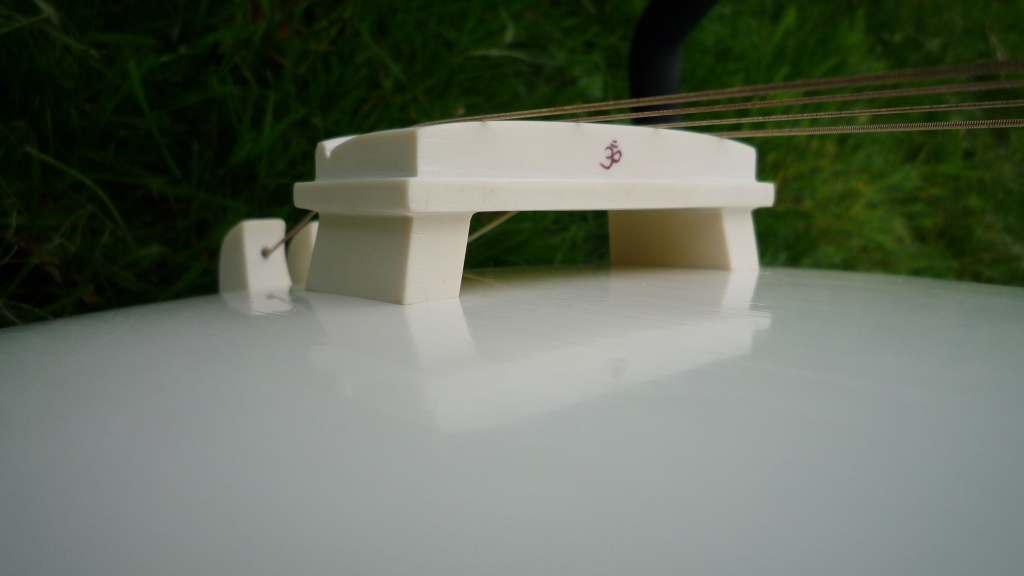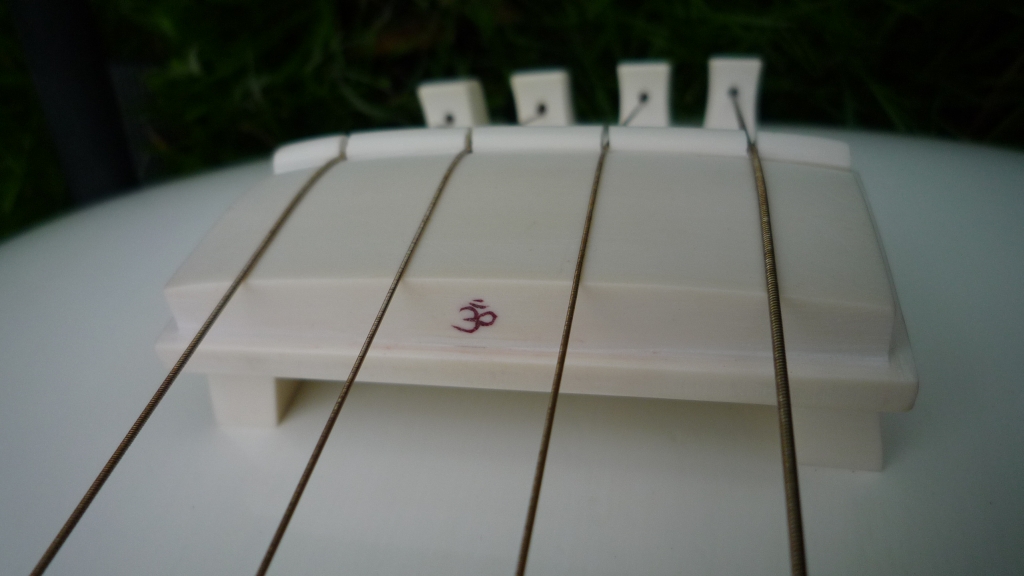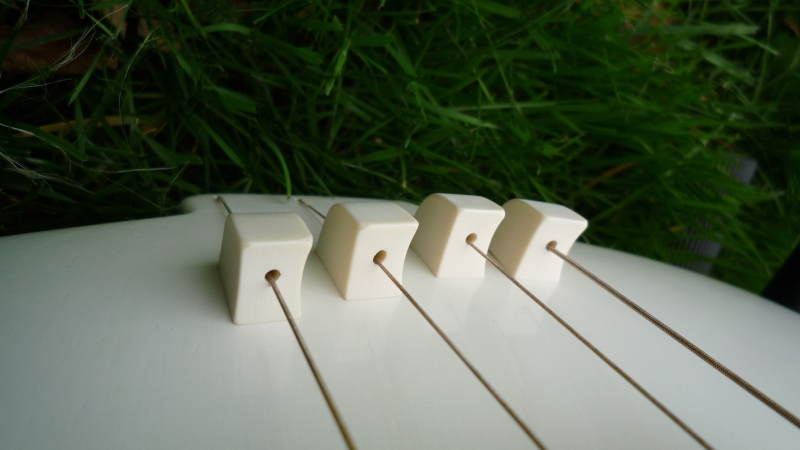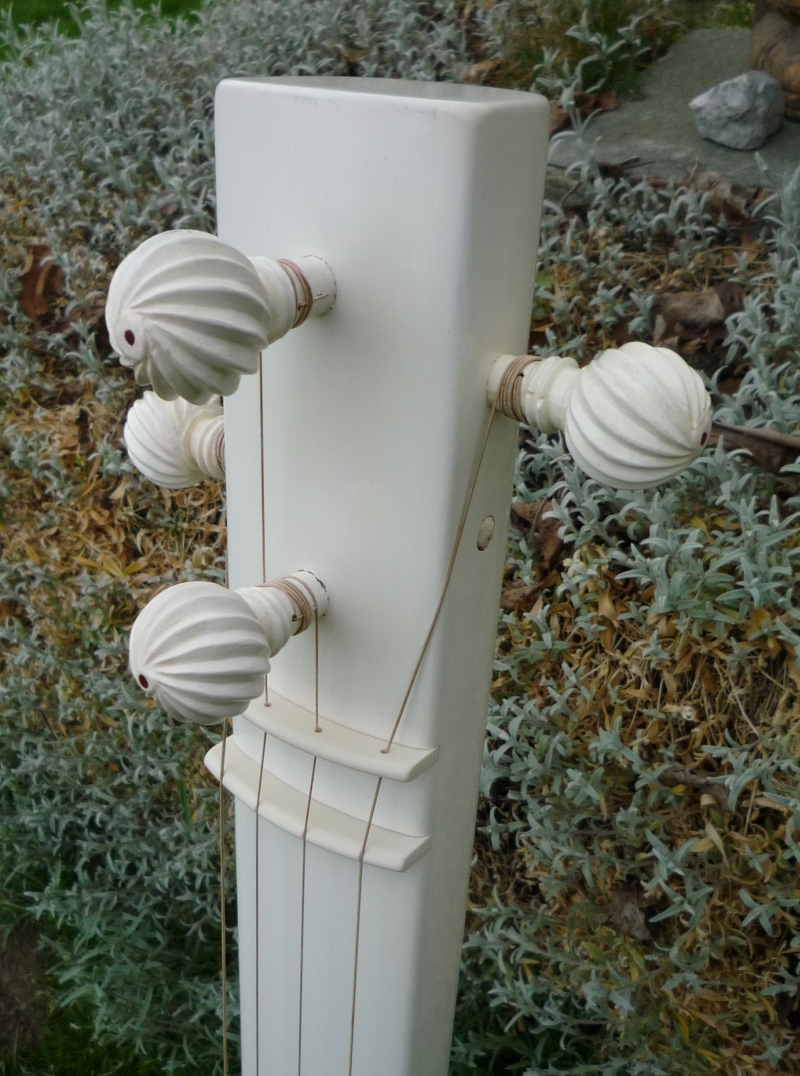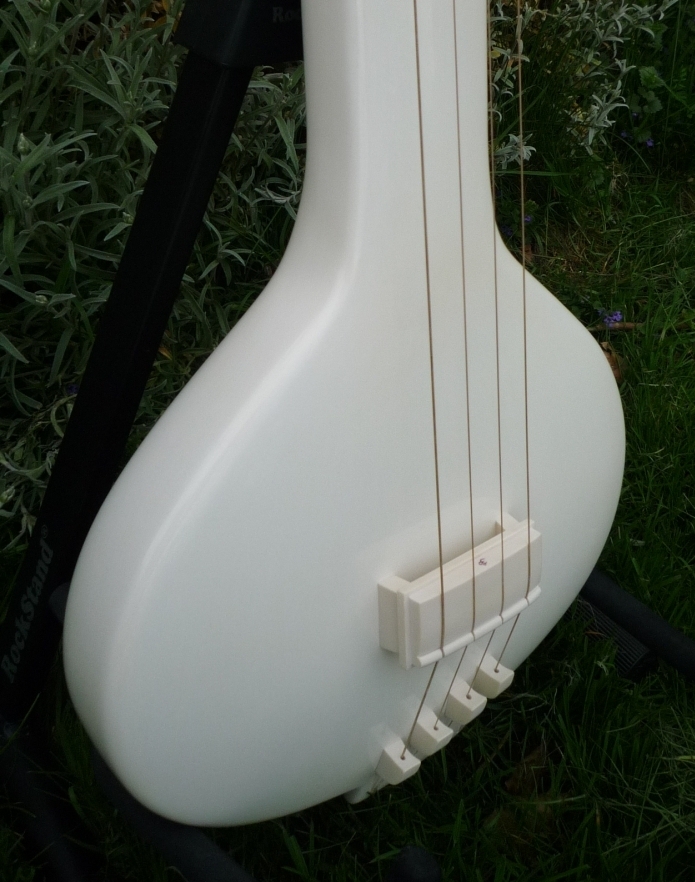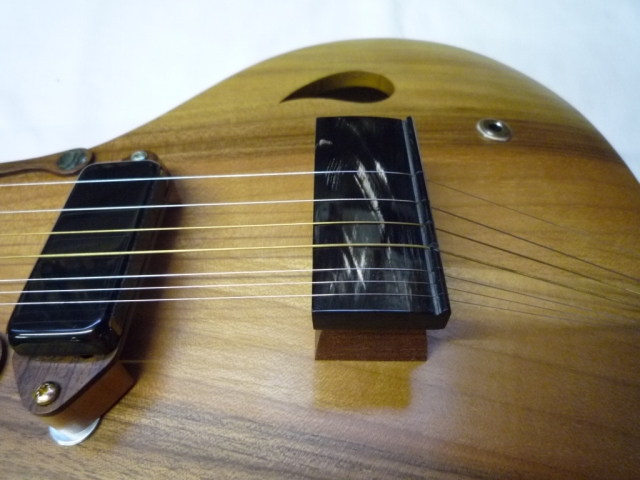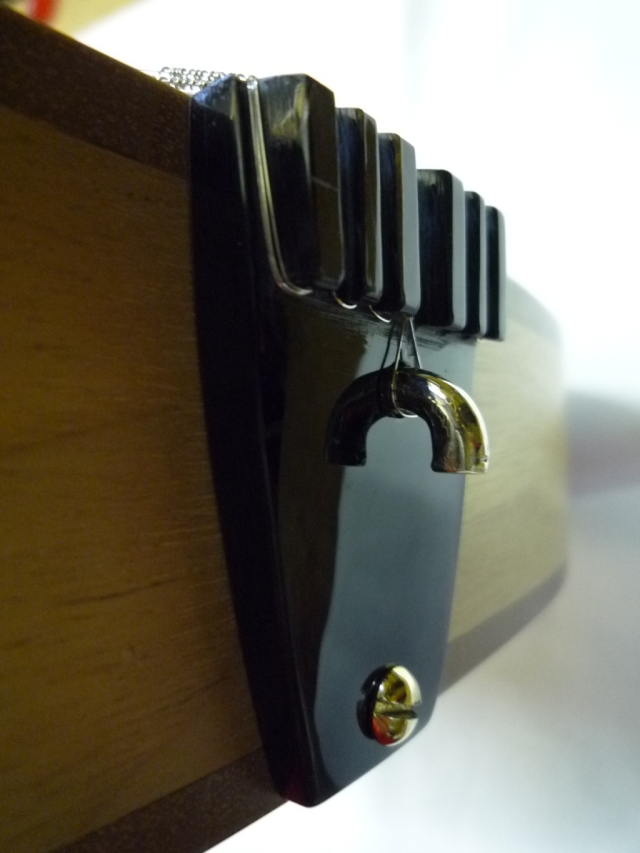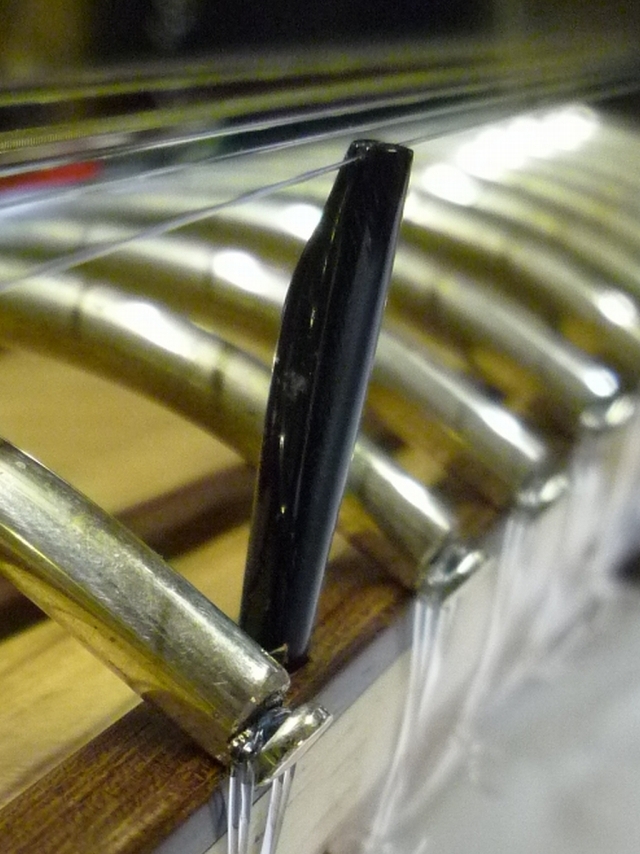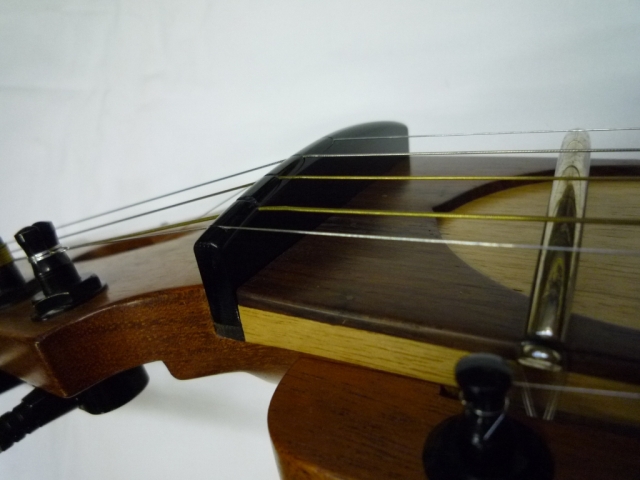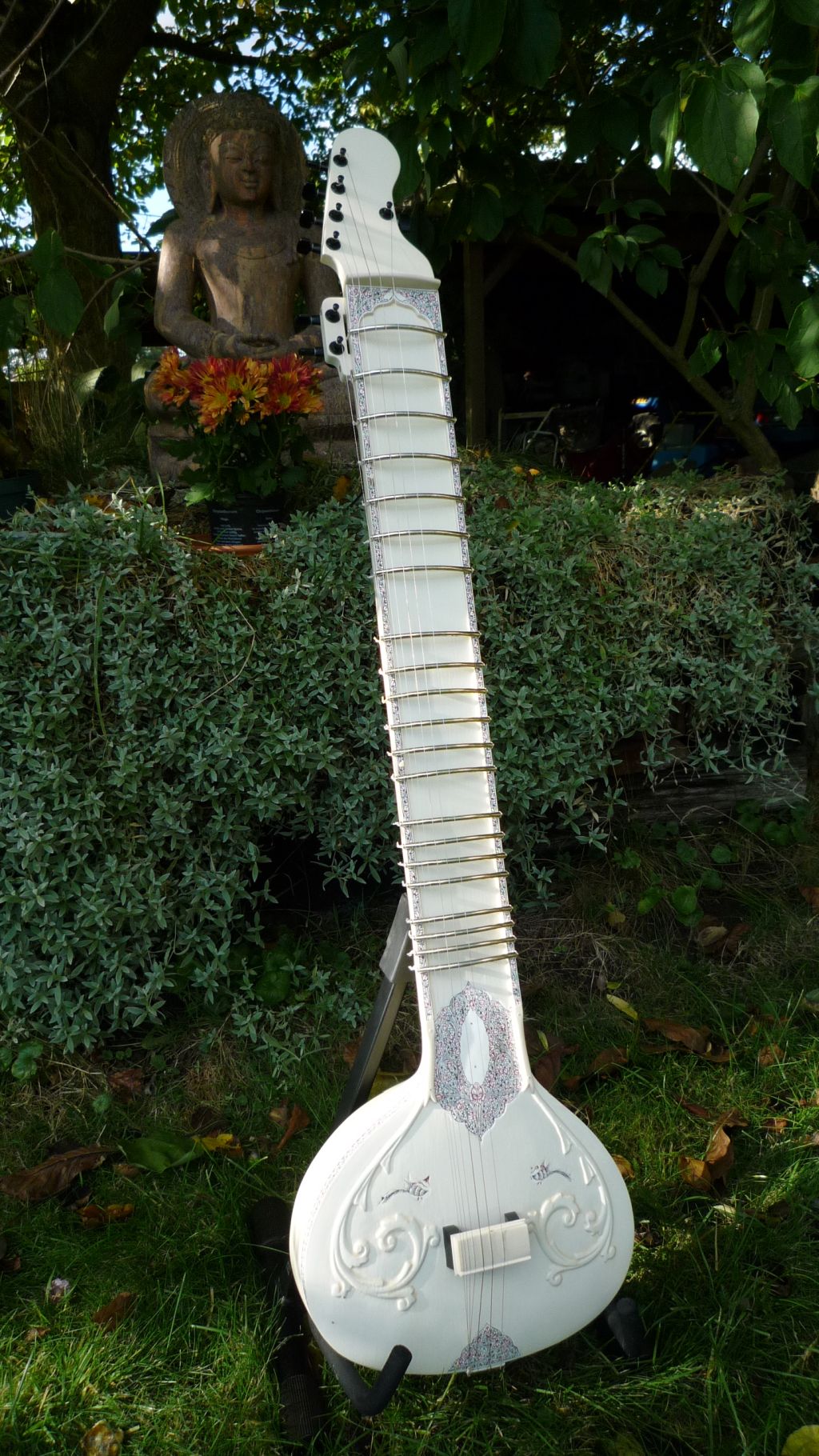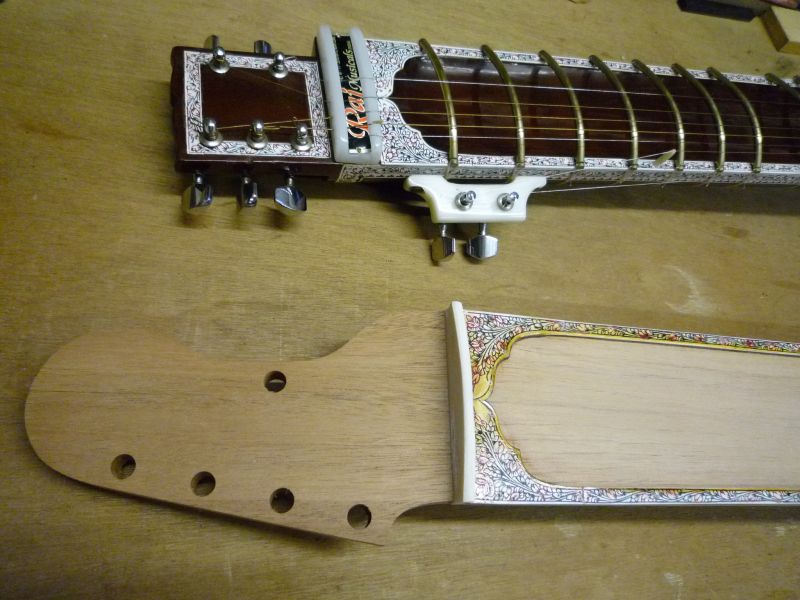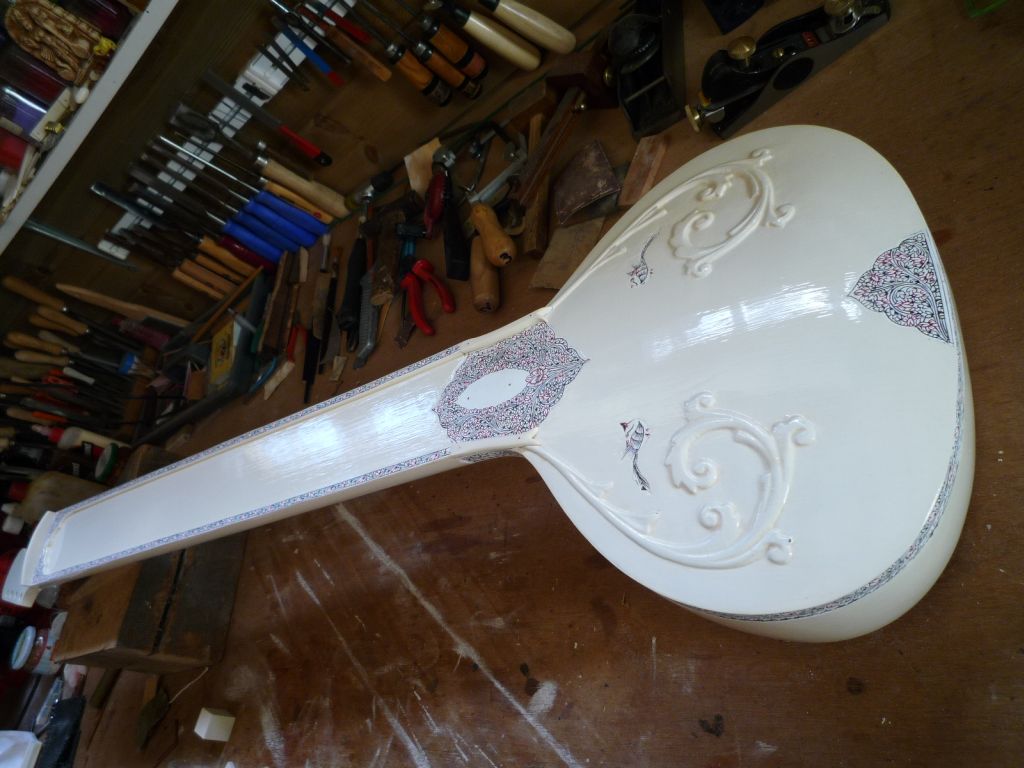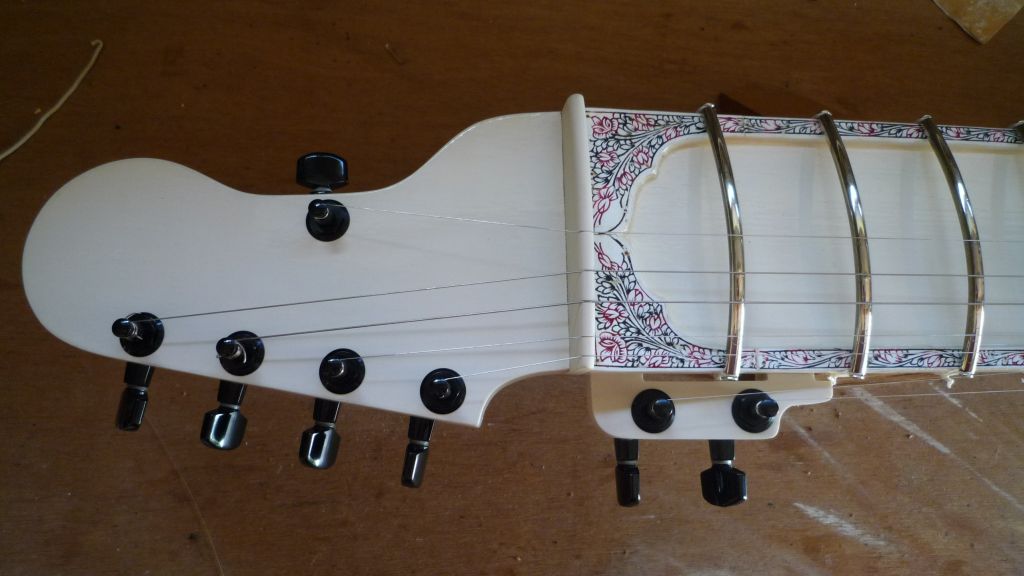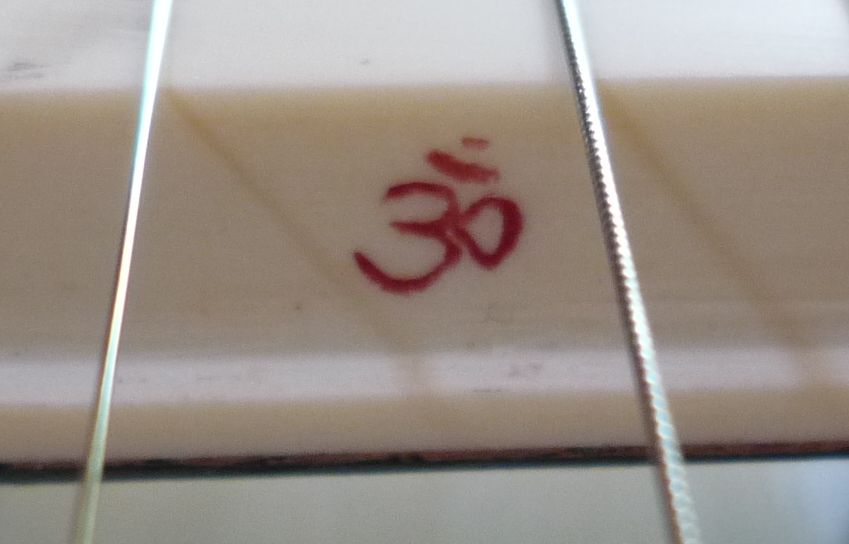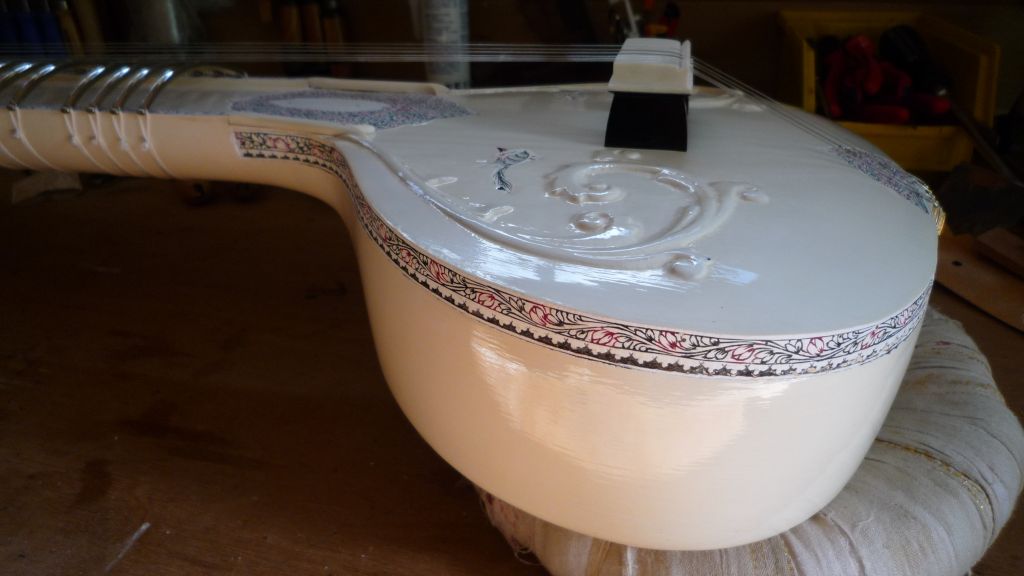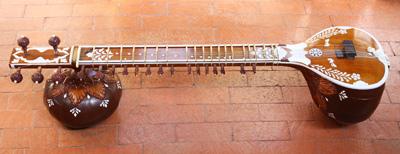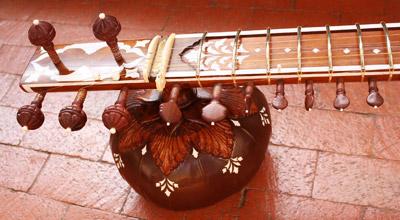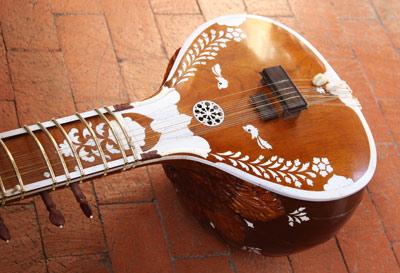A new set of ghorajs made by Dieter Zarnitz. The wood comes from leftover pieces of a construction.
“Cumaru” is a very fine, hard and durable construction-wood. “Angelim Amargoso” is very heavy and rougher than Cumaru. Both grow in South America. The colour you see is the natural one. The setting (“jawari“) can be done at the Sitar Factory (Belgium).
Category Archives: making
Engravings on Elforyn
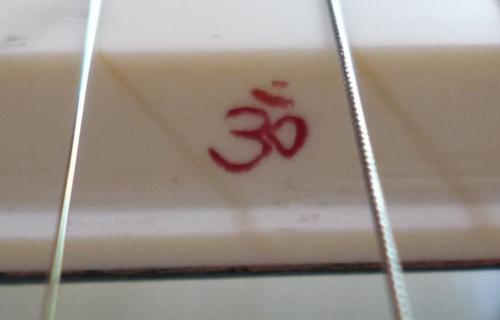 Elforyn™ is a modern synthetic ivory substitute and can easily be engraved. The technique is identical to traditional decorative engravings on real ivory, bone, celluloid and plastics. You only need a “pencil” with a hard and sharp end, coloured wax and a scraper. The pencil can be made out of an old and worn triangular file. Shape and sharpen the tip thoroughly with a fine grade grinding stone. Check the sharpness and try to write your name on piece of wasted plastic first. Make sure to engrave the lines equally deep and wide.
Elforyn™ is a modern synthetic ivory substitute and can easily be engraved. The technique is identical to traditional decorative engravings on real ivory, bone, celluloid and plastics. You only need a “pencil” with a hard and sharp end, coloured wax and a scraper. The pencil can be made out of an old and worn triangular file. Shape and sharpen the tip thoroughly with a fine grade grinding stone. Check the sharpness and try to write your name on piece of wasted plastic first. Make sure to engrave the lines equally deep and wide.
Wax is used as a filler. Prepare it by melting it slowly. Be careful not to overheat. Also, …damps can be dangerous! Add some nice colour pigments to the melted wax and stir. Use a scraper to apply the wax on the engravings. Let it cool down and scrape the excess off.
A scraper can be made out of an old and worn blade of a hacksaw. Make the edges surface nicely straight and perfectly even. Don’t be afraid to polish it up. Then learn to scrape by holding it almost perpendicular to the surface.
More info on Elforyn™ here: www.elforyn.info
The See-Tar
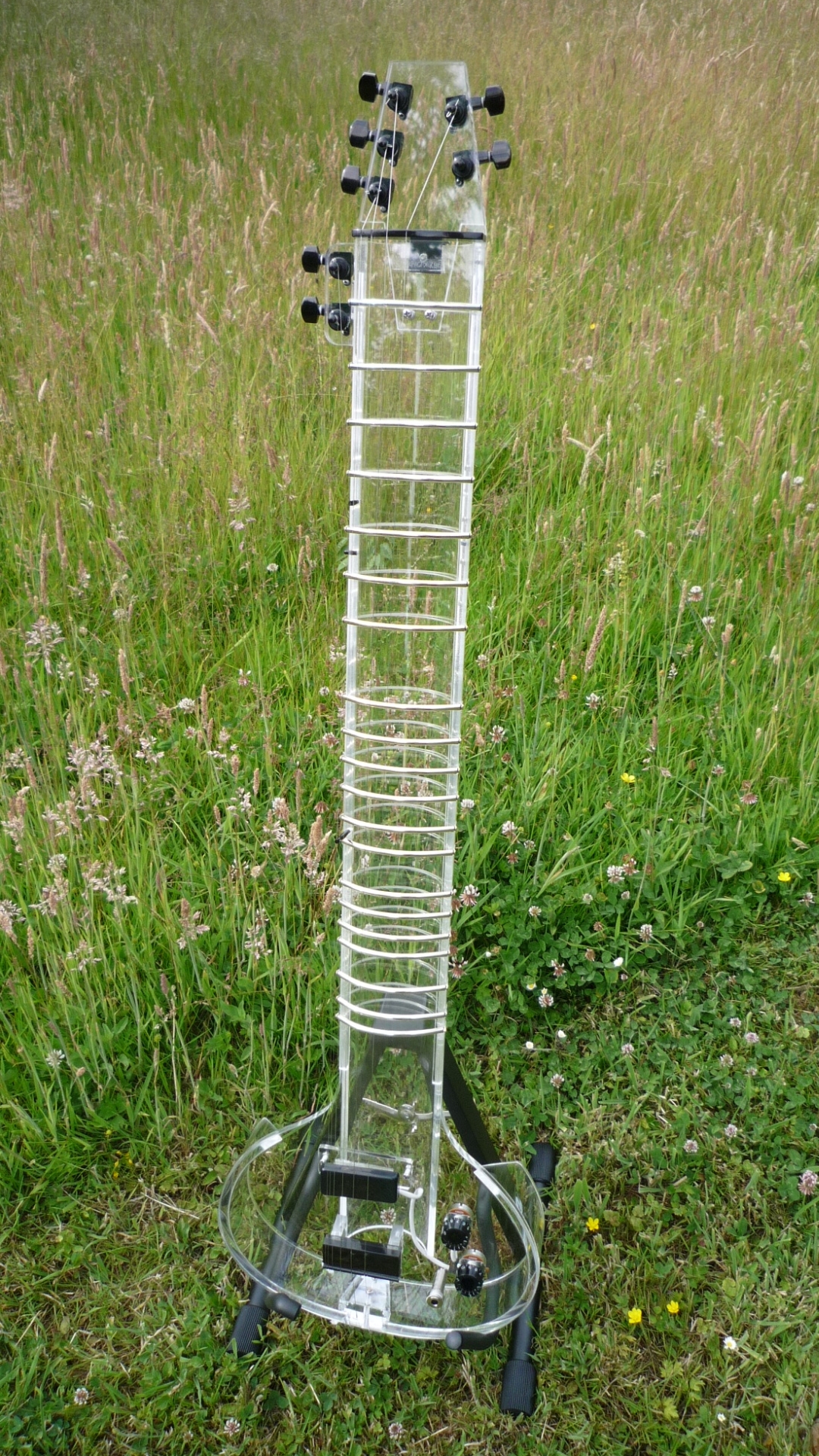 Last week Friday, 19/06/2015, I’ve delivered this electric plexiglass sitar to Purbayan Chatterjee. One year has passed since he had asked me to build this instrument for him (May 2014). Initially I found it a weird idea and honestly, I didn’t favour the choice of plexiglass because of the rather unknown and synthetic nature of this material (modified PMMA / Polymethyl methacrylate). In general I prefer working on wood, rather than with plastics. But the unique challenge seduced me completely and I plunged into this venture which took me a year to accomplish.
Last week Friday, 19/06/2015, I’ve delivered this electric plexiglass sitar to Purbayan Chatterjee. One year has passed since he had asked me to build this instrument for him (May 2014). Initially I found it a weird idea and honestly, I didn’t favour the choice of plexiglass because of the rather unknown and synthetic nature of this material (modified PMMA / Polymethyl methacrylate). In general I prefer working on wood, rather than with plastics. But the unique challenge seduced me completely and I plunged into this venture which took me a year to accomplish.
The moment I finally passed this sitar into Purbayan’s hands was very exciting, for me as well as for him, because this is really the first sitar ever made completely out of plexiglass. The instrument has a breathtaking look. The transparency is 100% and makes it look quite unreal… But, as this is meant to be a professional musical instrument, I was especially wondering how it will behave on stage, how it will sound, will the material withstand the constant changing and heavy tensions caused by the powerful play of an extremely talented professional sitarist like Purbayan Chatterjee…? 
Soon after handing over the instrument I went back home and kept my mobile close to me. That same afternoon Purbayan tested the sitar profoundly during the rehearsal for a concert the next day in Brussels with Slang, the impressive jazz/rock band (with flute virtuoso Manuel Hermia) from Belgium. 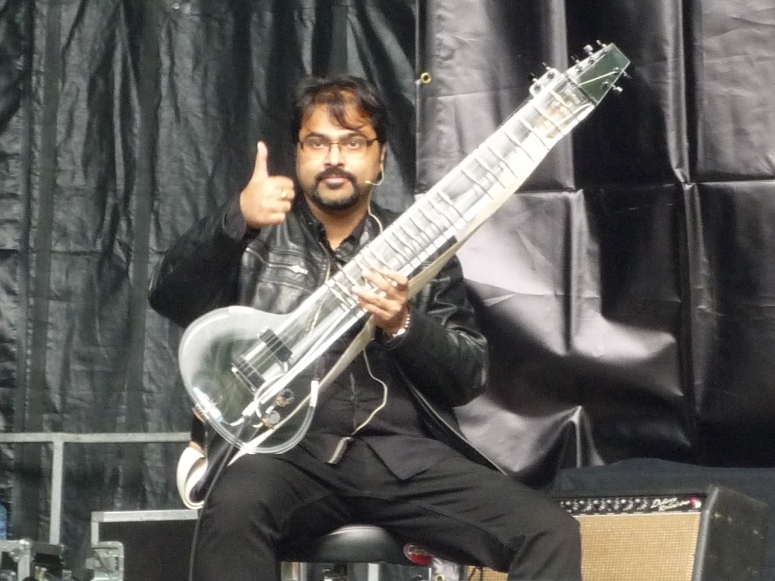
To my relief no alarm call came, not in the evening, and not in the following morning. A few hours before the concert on Saturday I received an sms from Manuel Hermia writing: “Purbayan loves your sitar!!” and, indeed, a few moments later, when we met in front of the concert stage, his big smile welcomed me,… and,… the concert was marvellous and blew away all my initial questions. Purbayan named the instrument “The See-Tar”, a see-through sitar.
Must read (on this site): The making of a solid body electric sitar in plexiglass.
White Tanpura
Inspired by the white sitar mod i’ve painted this tanpurabody also in white using Bio Pin™ waterbased organic white paint and Colortone™ high gloss waterbased finish. The patri, jawari and mankas are all made from Elforyn™, a modern synthetic ivory substitute. So also this one became a real “organic & vegan” instrument,… 100% suitable for vegetarians… 🙂 … and she looks very neat too.
Dieter Zarnitz ghoraj
These ghorajs are made by Dieter Zarnitz. He has copied the Barun Roy and Hari Chand style exactly. The feet are from maple or rosewood, the tops out of snakewood, rosewood or Elforyn™. The setting (“jawari“) can be done at the Sitar Factory (Belgium).
SAS-01 “Black buffalo” edition
Since the good old stagghorn becomes more and more rare, we are in constant seek for a valid alternative. One of the contenders is the black buffalo horn. Buffalo horn plates are used as material for engraving, for pocket knives, tang blades and japanese cooking knives. The plates are partially covered by bright, natural growth patterns and after polishing it becomes shiny and very durable. The sound is something between stagghorn and ebony. Dense, clear and very warm. Very promising !!

Black buffalo horn plate, as sold at Nordisches Handwerk website.
I’ve made a complete new hardware set out of black buffalo horn for my SAS-01 semi-acoustic sitar: ghoraj (main bridge), langoot (tail mount), mogara (cikari posts) and patri (neck bridge). And it looks good !! Click the pictures for fancy-zoom. 🙂
Travel Sitar Mods (3B) … the white sitar
After finalizing the structural rough woodwork on the travel-sitar’s body (see Part 1 = Travel Sitar Mods (3A)) the final acts are: completing the body finish and preparing and installing the sitar’s hardware such as godi (jawari), machine heads, strings, pardas and eventually an electro-magnetic pickup.
I’ve painted the body in white using Bio Pin™ waterbased organic white paint and Colortone™ high gloss waterbased finish. The patri, jawari, cikari machine head mount and cikari posts are all made out of Elforyn™. So it became a real “organic & vegan” sitar,… 100% suitable for vegetarians… 🙂
Installing 7 Schaller™ Mini M6 machine heads and 20 bronze pardas N°6.
Main strings gauges :
1) Baj tar : steel, 0,30mm (N°3)
2) Jora tar : nickel flatwound, 0,46mm (N°26)
3) Laraj tar : nickel flatwound, 0,56mm (N°24)
4) Gandhar tar : steel, 0,30mm (N°3)
5) Pancham tar : steel, 0,30mm (N°3)
6) & 7) Cikari tar : steel, 0,23mm (N°0)
Some details :
First Karasek sitar
Tony Karasek, an american performing artist and technician with 30 years experience in instrument repairs and maintenance has finally made his first sitar. He writes:
“Due to increased market demand, the quality level of Indian instruments currently being produced has suffered significantly. (I made a living for years repairing them in California). Recognising this fact, I moved to Pune, India with my wife and family in April, 2003 to re-establish the high quality standards for instrument production. My intention is to produce a line of Sitars and Tanpuras based on those of the mid-20th century.”
After this adventure, he resides in Charlotte, North Carolina and made his first own handmade sitar. It took about 18 months and 3 rewrites to produce the “Karasek Sound Domestic Custom Sitar Number 1”. Tony writes about it:
“The priority was first and foremost – sound with finest quality materials, components, joinery and consistant fit and feel. To that end, this sitar came into being. The body is made of mahogany with padouk wood trim. Indian rosewood pegs, Arizona grown gourds, delrin bridges and faux tortoise shell trim finish off the rest of the instrument. Internally, there have been many new innovations that have not only produced a far more solid instrument but greatly enhanced the tone and resonance.”
I would love to see and feel this unique and most promising instrument in real and play it. Meanwhile for me there are only a couple of impressive pictures to see, and a youtube demo. All the above pictures are from Tony. You can find more of them and also a lot of very detailed and unveiling info at his website Karasek Sound here.
Sitar Mod: adding 4th cikari, the alternative way…
Another young and dedicated Ashok Pathak sishya came to me with this old Hiren Roy sitar. The question came up again: Can you add an extra cikari string to this precious vintage sitar in order to meet the Balaram Pathak Garana style specifications? Since I am not so much in favour of starting to drill holes in old and valuable instruments, I decided to introduce an alternative way. Just as I did before with an old and beautiful Kartar Chand surbahar, I proposed to use the first tarav kuti to mount the 4th cikari string (high SA). This sitar came with 13 tarav strings. So then now 12 are left, which finally should be a good compromise…?
Since I am not so much in favour of starting to drill holes in old and valuable instruments, I decided to introduce an alternative way. Just as I did before with an old and beautiful Kartar Chand surbahar, I proposed to use the first tarav kuti to mount the 4th cikari string (high SA). This sitar came with 13 tarav strings. So then now 12 are left, which finally should be a good compromise…?
 Doing so, the workflow is highly reduced to the making and installing of a new cikari pin which can hold 2 cikari strings & re-organising the existing cikari string positions and adding an extra cikari string slide on the jiwari. Also the original last cikari string post (high SA) has to be replaced by a new pin.
Doing so, the workflow is highly reduced to the making and installing of a new cikari pin which can hold 2 cikari strings & re-organising the existing cikari string positions and adding an extra cikari string slide on the jiwari. Also the original last cikari string post (high SA) has to be replaced by a new pin.
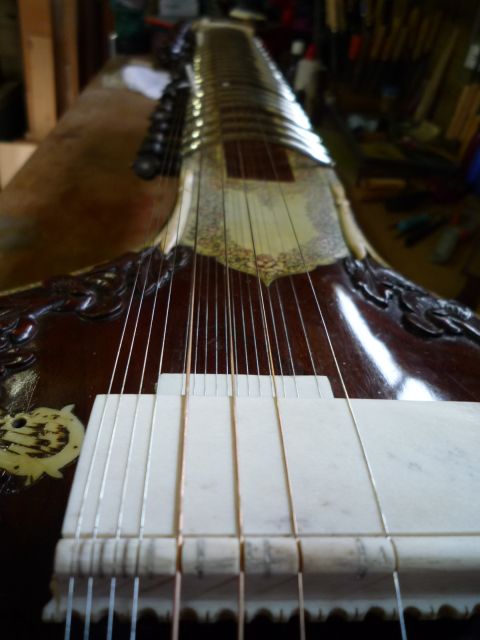 Also read: Sitar Mod: adding 4th cikari.
Also read: Sitar Mod: adding 4th cikari.
Sitar made by Alan Arthur Suits
I’ve added a page to Sitar Making Links about this beautiful and unique sitar made by Alan Arthur Suits. He has sent me some pictures and info about the construction of this sitar. Click here.
Alan writes on his website:
“The sitar was built to concert level quality, using the highest grade materials and craftsmanship. The body is a natural gourd as is the top tumba (gourd resonator). The main body is Spanish cedar (virtually identical to Himalayan cedar or Tun wood). All the ornaments are real ivory recycled from 70 year old piano keys. The bridges are African blackwood, a species of rosewood, one of the hardest known woods and considerably harder than ebony, with rosewood feet. The pegs are turned of Bolivian rosewood.”
“The sitar plays with excellent action and has a truly superb tone with great overtones, sympathetic response, and a Nikhil Banerjee style jawari. It will fit in standard fiberglass sitar cases.”
More info see Coyote’s Paw Gallery Ltd.

